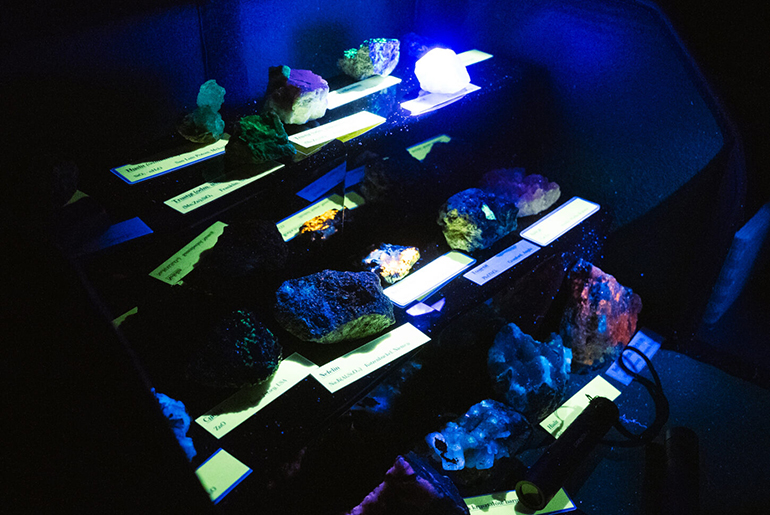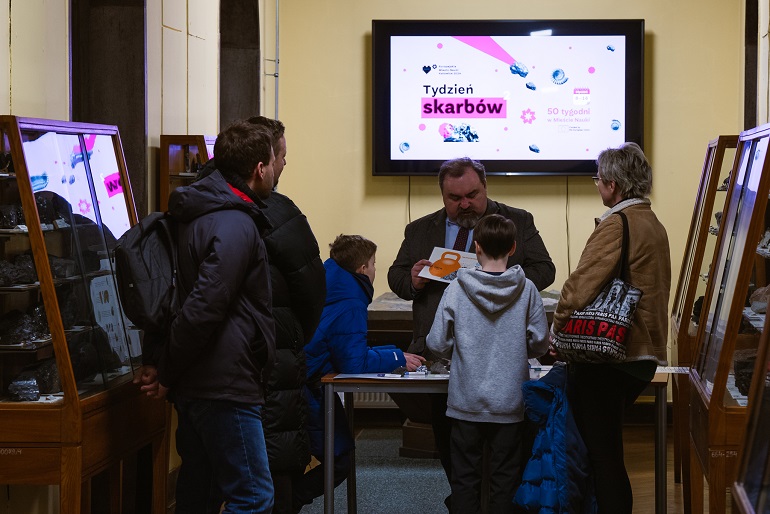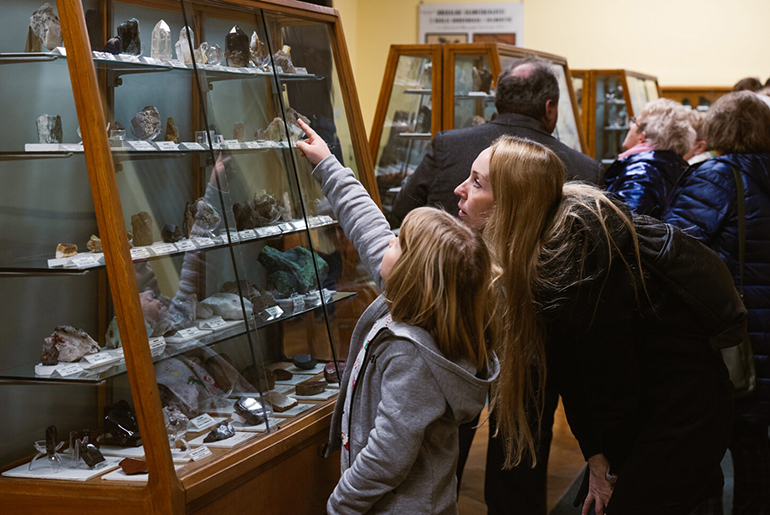Start - Aktualności - What’s hidden in smartphones and why minerals glow

What's hidden in smartphones and why minerals glow
The Treasure Week at the Silesian University of Technology as part of the European City of Science Katowice 2024 was full of events popularizing science. Those interested could learn, among other things, which of the most valuable and expensive metals are necessary for technology and why some minerals glow.
Dr hab. Eng. Magdalena Kokowska-Pawłowska and dr Eng. Jacek Nowak - employees of the Department of Applied Geology at the Faculty of Mining, Safety Engineering and Industrial Automation of the Silesian University of Technology presented the most valuable and expensive metals that are necessary to produce, for example, smartphones. They contain dozens of composites, compounds and metals that contain almost 75% of the elements from the periodic table. More than half of all the elements in a mobile device - including its screen, casing, microprocessor, cables, battery, speaker and microphone - could not be created if it were not for the mineral raw materials that are used to produce all these components.

– Copper ores contain about 2% copper, the copper content in smartphones is 13%, they also contain gold, silver, tin and silicon – explained dr Eng. Jacek Nowak presenting the minerals that are the sources of these elements. – It is worth realizing that electronics contain a lot of raw materials, geologists had to find their deposits in many places around the world, miners had to extract them, and metallurgists or other specialists had to process them so that, for example, such a telephone could be created. Mineral raw materials are non-renewable, it is our obligation towards future generations to recover them as secondary raw materials and limit consumption - emphasized the scientist, urging people not to hide used phones in drawers, but to send them to appropriate collection points.
The topics of the classes attracted participants of various ages to the Museum of Deposit Geology. – A very interesting show, I didn't know there was so much gold in my phone – said Irena Cywińska, who came with a group of seniors to the Treasure Week at the Silesian University of Technology from Chorzów. 11-year-old Bartek Bochyński came to the show with his younger brother and mother. - I already have geography at school, but we haven't learned about rocks yet, and this topic interests me - said the boy - especially those minerals that create amazing patterns, I collect them, and I already have a nice collection.

Earth's treasures can also be interesting because they allow us to discover a lot of information about our planet. – For me, the most fascinating thing is that based on the study of rocks we can reconstruct the history of the earth, based on fossils we can determine where a given rock comes from – said dr hab. engineer Magdalena Kokowska-Pawłowska from the Faculty of Mining, Safety Engineering and Industrial Automation of the Silesian University of Technology, who also teaches geography at the Academic Secondary School in Rybnik. – I come to the Museum of Deposit Geology with young people, we see minerals that are necessary in everyday life, we look at rocks under a microscope and, for example, at first glance, dark basalt turns out to be very colourful because it contains a lot of minerals.
It is worth taking a closer look at the rocks - students from the "Silesian" Geologists' Scientific Club of the Silesian University of Technology do it with passion. As part of Treasure Week, they presented a collection of fluorescent minerals they had created. They searched for glowing treasures in the warehouses of the Museum of Deposit Geology and during student research trips. – We searched thousands of boxes with minerals, shined UV flashlights on them and chose those that glowed the prettiest – explained Kinga Kwiecień from the "Silesian" club, a bioinformatics student at the Silesian University of Technology. – I have been collecting minerals since childhood and that's why I joined the club, thanks to which I can develop my passion. Fluorescence is a very interesting phenomenon, invisible to the naked eye, and under the influence of UV light, an ordinary grey pebble can turn pink or green, added the student.

The scientific supervisor of the Student Scientific Club of Geologists "Silesian" is prof. dr engineer Małgorzata Labus from the Faculty of Mining, Safety Engineering and Industrial Automation of the Silesian University of Technology. – Minerals themselves are interesting, and in my opinion the most fascinating thing is that nature created such wonders – said prof. Labus - minerals usually do not glow on their own, but some of them can be made to glow using various methods. Students have scientific plans and want to find out what is the factor causing the glow, added the professor.
Those who did not have the opportunity to see the luminescence show during Treasure Week will in the future be able to admire the collection of fluorescent minerals at the Museum of Deposit Geology of the Silesian University of Technology, which enthusiasts from the "Silesian" club plan to create.










